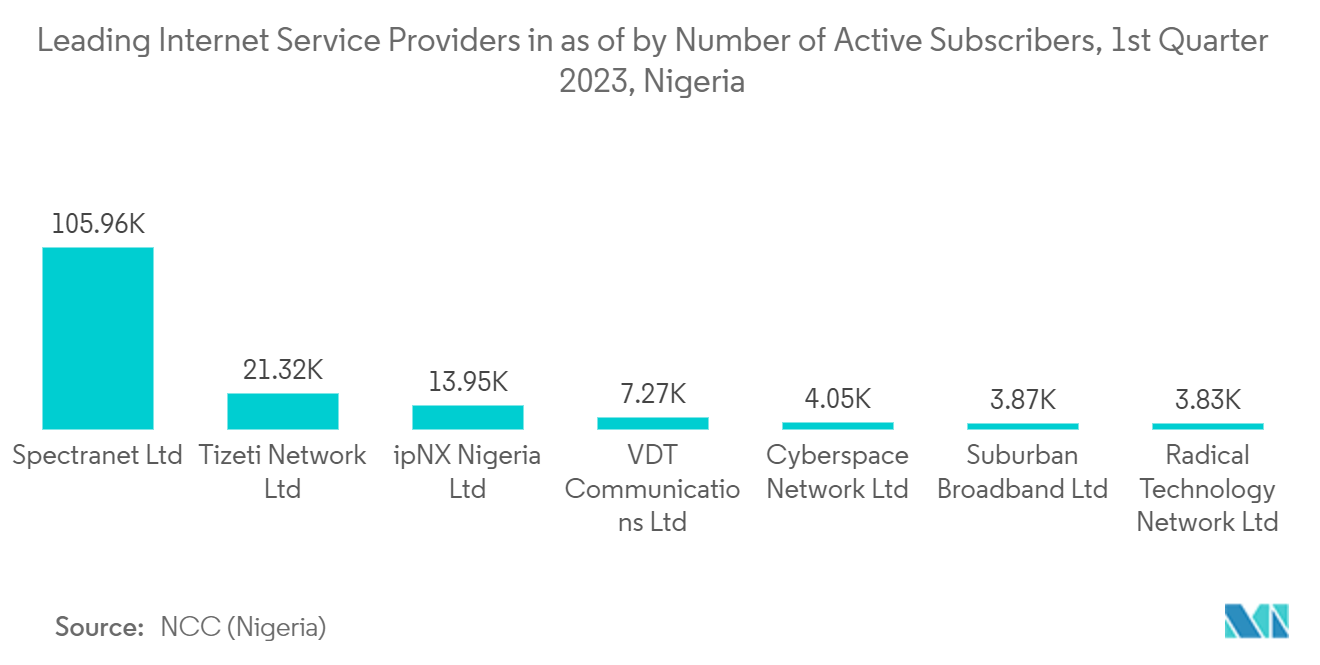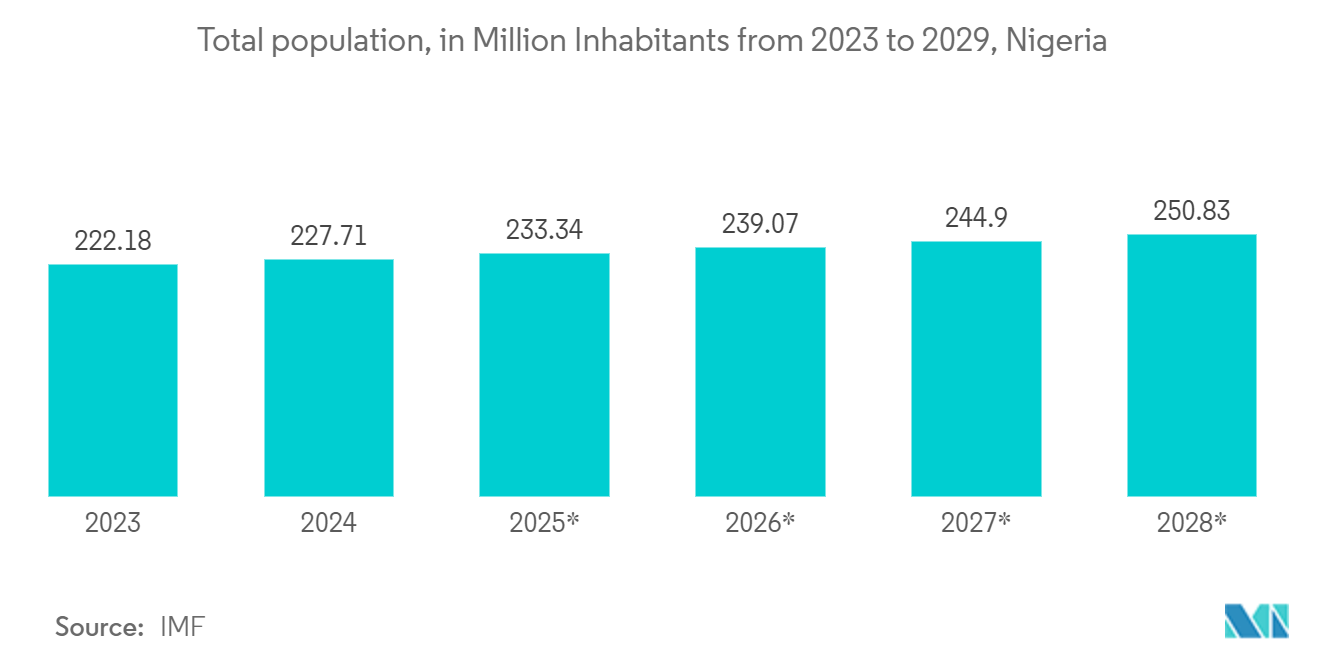Market Trends of Nigeria Satellite-based Earth Observation Industry
Increasing Focus on Connectivity and Data Accessibility to Drive the Market Growth
- As the demand for satellite internet and digital connectivity grows in Nigeria, it leads to improved infrastructure development, including ground stations and communication networks. This increased connectivity facilitates the efficient reception and transmission of data from Earth observation satellites. As a result, the accessibility of Earth observation data becomes more widespread and seamless.
- Moreover, with greater emphasis on improving data accessibility, efforts are directed towards developing user-friendly platforms and interfaces that allow various stakeholders, such as government agencies, researchers, industries, and healthcare providers, to access and utilize Earth observation data effectively.
- The total number of satellite internet subscriptions can serve as a proxy for the level of internet connectivity and technological adoption in Nigeria. More satellite internet subscriptions indicate a growing demand for internet services, which can positively affect the satellite-based Earth observation market. Increased internet connectivity implies better data transmission and accessibility, making receiving and processing Earth observation data easier.
- The combination of increased connectivity and enhanced data accessibility creates an environment conducive to adopting and utilizing satellite-based Earth observation services. It empowers stakeholders to make informed decisions, research, and develop innovative applications across agriculture, disaster management, environmental monitoring, urban planning, and healthcare sectors.
- In summary, the increasing focus on Connectivity and Data Accessibility drives the Nigeria Satellite-based Earth Observation market by enabling better data transmission, expanding the user base, and fostering the effective utilization of Earth observation data for various applications.

Agriculture End-use Segment to Hold a Significant Market Share
- Satellite-based Earth observation offers valuable tools and data for agriculture. Earth observation satellites can monitor various agricultural parameters, including crop health, soil moisture, land use, and weather patterns. Such data can help identify regions facing food insecurity, assess crop conditions, and support early warning systems for droughts or other natural disasters affecting agricultural productivity.
- Moreover, Earth observation is crucial in disaster management and building food resilience in a country prone to weather-related challenges. By monitoring weather patterns and environmental conditions, satellites can aid in predicting and mitigating the impact of extreme events on agriculture, thereby enhancing food security.
- In addition, as per the IMF records, by 2028, almost 256.86, in million inhabitants, Nigeria total population .Due to rising food prices and a rapidly expanding population, acute food insecurity has become more prevalent in Nigeria than it was a few years ago.
- Consequently, these persistently high levels of extreme food insecurity in Nigeria over the years may indicate the enormous difficulties the agricultural sector still has in ensuring food distribution, production, and security. The high rates of food insecurity demonstrate the need for effective and innovative solutions to issues, including inefficient resource management, poor agricultural yields, and susceptibility to environmental factors.
- The prevalence of food insecurity in Nigeria can trigger increased attention from the government and policymakers to address agricultural challenges. For example, NigeriaSat2 was primarily designed for agricultural applications. As a result, there may be a growing interest in investing in satellite-based Earth observation technologies to support agriculture and improve food security.


